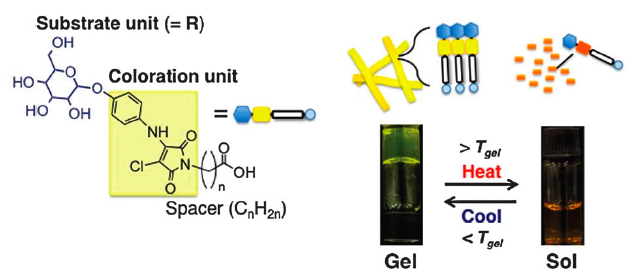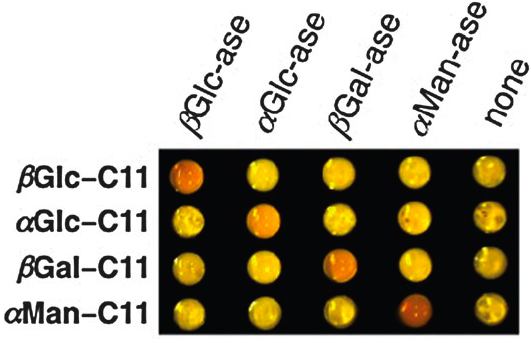The study of controlled motion on the molecular scale is leading to the development of materials in which molecular motions can be used to control a macroscopic effect. In particular, the isomerisation of azobenzene from the stable trans- form to the cis- isomer on irradiation with UV light has been widely used in supramolecular and soft matter chemistry as a simple, controllable molecular switch for this purpose.
In this HOT ChemComm article, scientists from Hokkaido and Kanagawa universities in Japan have investigated the macroscopic motion of some simple oleate assemblies containing azobenzene derivatives.
Simple oleates form a range of supramolecular assemblies under certain pH conditions. The authors found that mixtures of simple oleates with their new azobenzene containing analogues could also form these assemblies, and investigated the effect of irradiating the structures with UV light. They found that vesicles containing azobenzene derivatives could be seen to reversibly expand and contract on irradiation. Additionally, helical multilayer assemblies containing azobenzene derivatives could be forced to reversibly straighten and re-coil using UV light (shown below).


This Communication describes an intriguing demonstration that designing controllable, switchable molecular components can create highly organised macroscopic motions, and is a great step towards functional supramolecular machinery.
Read this HOT ChemComm article today:
Macroscopic motion of supramolecular assemblies actuated by photoisomerization of azobenzene derivatives
Yoshiyuki Kageyama, Naruho Tanigake, Yuta Kurokome, Sachiko Iwaki, Sadamu Takeda, Kentaro Suzukib and Tadashi Sugawara
Chem. Commun., 2013, Advance Article
DOI: 10.1039/C3CC43488E
Cally Haynes is a guest web-writer for ChemComm. She is currently a post doctoral researcher at the University of Southampton, and her research interests include the supramolecular chemistry of anions. When not in the laboratory, she enjoys travelling and watching football.






















